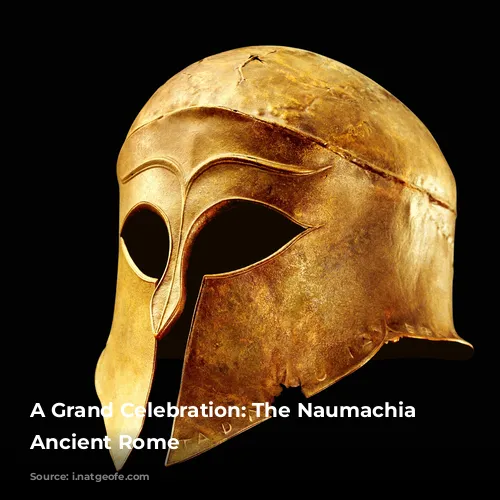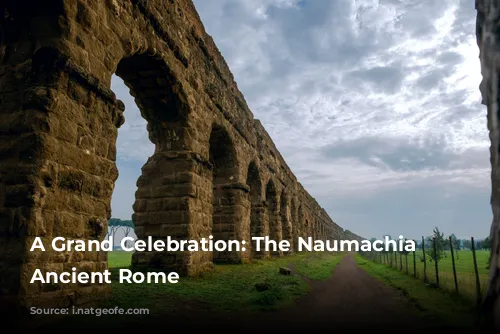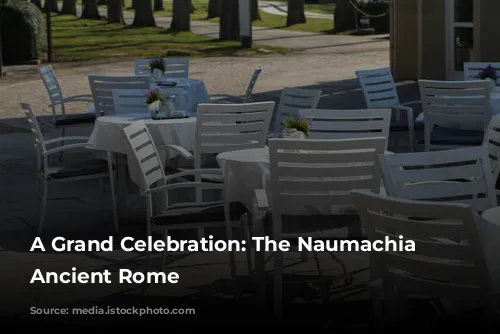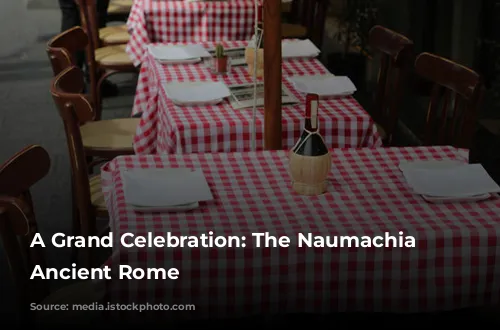The year was 46 B.C., and the city of Rome was buzzing with excitement. Julius Caesar, the newly proclaimed dictator, had just returned from a victorious campaign, crushing the forces of his rival, Pompey the Great. The people of Rome wanted to celebrate their leader’s triumph in grand fashion, and a spectacle unlike anything they had ever seen was planned.
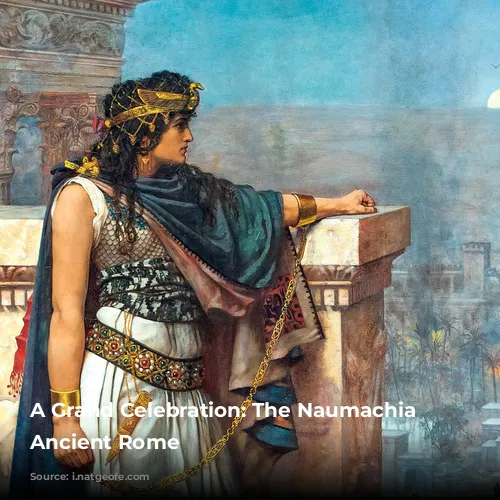
A Sea Battle on Land
The festivities began with a grand procession. The people lined the streets, their cheers echoing as Caesar, flanked by his loyal soldiers, made his way through the city. But the real highlight was yet to come. A giraffe, a creature never before seen in Rome, captured the attention of the crowds, its unique features earning it the name “camleopard”. However, the climax of the celebrations was a naval battle on a man-made lake, created in the Campus Martius.
The Campus Martius, a vast open space within the city, was transformed into a vast lake. Water from the nearby Tiber River flowed into the specially constructed basin, creating a stage for a spectacular naval battle. Two fleets, comprised of biremes, triremes, and quadriremes, clashed in a reconstruction of a real naval battle. The sheer scale of the event was staggering. Thousands of people from all over Italy flocked to witness this amazing event. The streets surrounding the lake were packed, with vendors, thieves, and even sex workers attempting to make a profit from the crowd. The excitement was so intense that some people even camped out overnight to secure a good view. Unfortunately, the crowds were so dense that some people even died in the crush. This massive and impressive spectacle, known as the naumachia, had captured the imagination of the Roman people.

More Than Just Entertainment
The naumachia quickly became a staple of Roman entertainment, joining the ranks of other popular spectacles like the gladiator fights (munus) and the wild animal hunts (venatio). These events were not merely for entertainment. They were also powerful demonstrations of Rome’s might and its engineering prowess. The Romans took pride in their ability to create such elaborate and impressive shows.
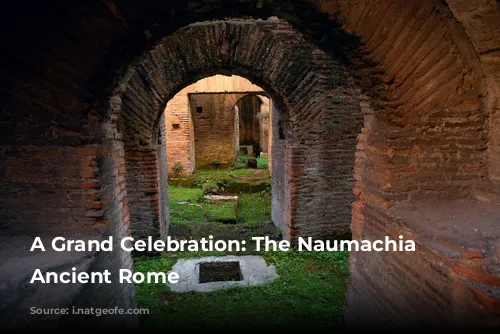
A Carefully Staged Spectacle
Caesar’s naumachia was a carefully staged event. It was not just a chaotic brawl. The battle was a re-enactment of a real historical conflict between the fleets of Tyre and Egypt, two of Rome’s traditional enemies. The spectacle, while impressive, was not without its dark side.
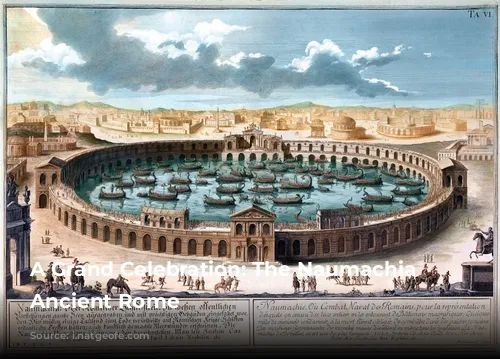
A Brutal Display of Power
The naumachia was a brutal affair. Real violence, blood, and drowning were all part of the show. The participants, known as naumachiarii, were typically prisoners of war or criminals sentenced to death. However, free men could also volunteer to take part in the spectacle, demonstrating the lengths to which some went for glory or even just to escape their ordinary lives. The naumachia was a macabre blend of entertainment and violence.

Expensive Spectacles
The logistical challenges of organizing a naumachia were immense. It required a colossal budget, a skilled team of engineers and craftsmen, and a vast workforce. The spectacle was staged on a massive scale and was a testament to Roman organizational skills. Due to the enormous cost and effort required, only a few more naumachiae were held after Caesar’s.
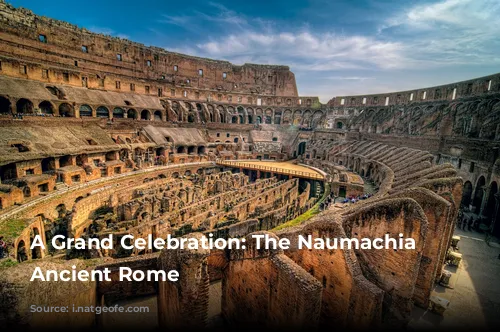
Diverse Venues for Naumachiae
The naumachia was staged in various venues. Some emperors chose natural bodies of water, such as the Strait of Messina, for their spectacles. However, the lack of control over the natural environment made it difficult to create the desired effect. To overcome these limitations, emperors began constructing special arenas. Augustus created a man-made lake, the Naumachia Augusti, on the Tiber River, which became a regular venue for these events.
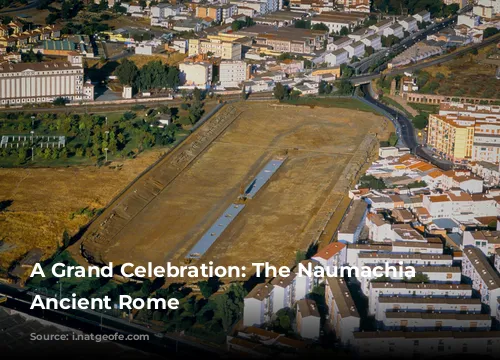
The Colosseum: A Stage for Naumachiae
The Colosseum, one of the most iconic structures in the Roman world, was also used for naumachiae. The Colosseum’s location and its unique design made it possible to flood the arena with water, creating a stage for naval battles. This ability added yet another dimension to the Colosseum’s already impressive repertoire of entertainment.
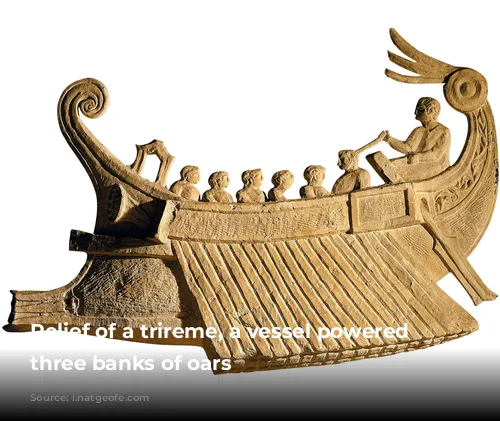
The Decline of Naumachiae
The naumachia, despite its popularity, ultimately faded into oblivion. The Roman Empire’s growing financial difficulties and internal conflicts contributed to the decline of these grandiose events. The last recorded naumachia was held by Emperor Philip in A.D. 248, marking the end of an era.

A Legacy of Spectacle
The naumachia, a blend of brutality and spectacle, became a powerful symbol of Roman power and its love for grandiose displays. These events, while shocking in their scale and violence, captured the imagination of the Roman people. Their legacy continued to be felt even after the decline of the empire, inspiring similar events in later centuries.
The naumachia was a testament to the Romans’ ability to create spectacles that were both awe-inspiring and terrifying. They were a powerful reminder of Roman imperial ambition and the lengths to which they would go to entertain and impress their citizens. The naumachia may be long gone, but its legacy as a symbol of Roman power and its love for spectacle lives on.
